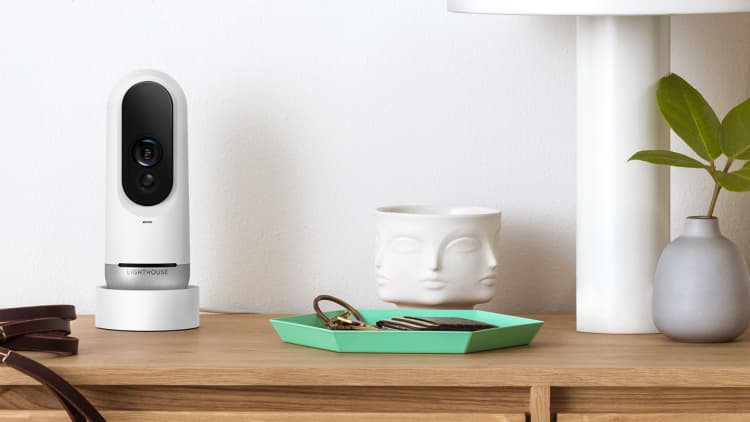
When Lighthouse AI CEO Alex Teichman leaves his house in the morning, he waves at the camera he's mounted above the front door. When his wife wakes up, she'll get a push notification on her phone showing her a video of his little goodbye.
It's not the typical use case you'd expect for a home security camera, but one that effectively embodies Lighthouse's overall mission: To create computer vision and artificial intelligence-powered products that can be controlled with commands as simple as "Ping me every time Alex waves."
With 3-dimensional sensors and machine learning capabilities, the Lighthouse system can differentiate between specific people and surface videos via natural language commands, like "Tell me if the kids don't get home by 4 pm on weekdays," or "Ping if you see a stranger outside the front door."
"It's about home awareness," says Teichman. "Security is a piece of it — like you'll get notifications when someone it doesn't recognize is in your home or something is moving around when everyone is away — but that's kind of the smallest piece."
Founded in 2015, the company raised $17 million in May, and made its first product available on Amazon and its own website in late February.
There are many other smart security cameras out there, notably from tech giants like Nest, which just rolled into Google to supercharge its AI capabilities, and Amazon, which just bought camera-equipped doorbell startup Ring.
But the hype around Lighthouse is due primarily to the computer vision chops of its founders, Teichman and Hendrik Dahlkamp, who met while working on Stanford's self-driving car project under the mentorship of Sebastian Thrun. Dahlcamp also sold two of his previous startups to Google and worked on the company's Street View product.
Chris Farmer, Lighthouse's seed investor through his fund SignalFire, says that it was that "founder market fit" that has made him pour in as much money as possible.
"They deeply understood the problem, but more importantly, they were A+ experts in the technological solution to that problem," he told CNBC. "That's what made this so compelling."
A focus on AI
Although Nest's security camera has also introduced features where it can recognize specific faces, Farmer says that what differentiates Lighthouse is that artificial intelligence has been its primary focus from the beginning, versus something that's gained significance as the product evolved.
To him, Lighthouse is ultimately the "connective tissue of the smart-home" because it's so easy communicate with and has the brains and vision to contextualize whatever is going on within the camera's range.
Teichman paints a similar picture. Lighthouse is in the process of developing an integration with the IFTTT ("if this then that") web service, so that users can control all their other smart devices based around what the Lighthouse camera sees. For instance, users could create commands like "turn on the kitchen light when the kids get home" or "lock the door when the dog-walker leaves."
Right now, Lighthouse's primary use-case is in the home, but one of the company's 34 employees spends all of their time thinking up new domains, like using the system for small business security or elderly care.
"When you can bring to bear really serious AI techniques, computer vision and deep learning with the cheat-codes of a 3D sensor, suddenly you can really do a lot of useful things that weren't possible before," Teichman says.


